A teenager's bedroom is like a busy hub. It's a place for sleep, homework, creative projects, and sometimes organized mess. Managing this space can be tough for both parents and teens. This is where Feng Shui can help. Forget strict rules and mysterious ideas - think of it as a teamwork tool to create a better room.
This guide shows Feng Shui as a practical way to design spaces. It's about making simple, thoughtful changes to create a helpful environment that improves focus, helps with sleep, and reduces stress. We will give you step-by-step advice to balance your teen's room, helping them build a space they love and that helps them succeed as they grow up.
Why Feng Shui Matters

Before moving furniture around, it's important to understand the main goal. Feng Shui isn't about forcing your ideas on someone - it's about managing the energy of a space to help the person living there feel better. For a teenager, this means real benefits in their daily life.
Understanding Qi Energy Flow
The heart of Feng Shui is Qi, the life force energy that flows through everything. In a home, Qi should move like a gentle stream, reaching every corner. The goal of feng shui for a teenage bedroom is to make sure this energy is fresh, clear, and flowing smoothly to support good activities and peaceful rest.
When the flow is wrong, you can notice it in everyday ways. A room with blocked or stuck Qi feels heavy and can make you feel trapped or tired. On the other hand, a room with wild, fast-moving Qi can feel unsettling, making it hard to relax or focus.
- Good Qi: Helps with clarity, calmness, creativity, and restful sleep.
- Blocked or Stuck Qi: Can make you feel trapped, tired, or cranky.
The Big Three Concepts
Instead of getting lost in old books, we focus on three ideas that have the biggest impact on a teen's bedroom. These are the foundation for a balanced and peaceful space.
- The Command Position: This is about feeling safe and in control of your space, which is really important for teenagers who are learning to be independent.
- The Power of Decluttering: This goes beyond just being neat. It's about clearing physical and energy space to reduce mental overload and make room for growth and new chances.
- The Psychology of Calm: This means using color, light, and decorations on purpose to balance mood, reduce overstimulation, and create a feeling that helps with both focus and relaxation.
The connection between environment and feeling good isn't just an idea. Studies about how spaces affect people show a direct link between messy, poorly organized rooms and worse sleep and higher stress levels in teenagers. By improving these "Big Three," you are directly investing in your teen's mental and physical health.
Getting Your Teen on Board
The most important step in applying Feng Shui to a teen's room is getting them involved. A design that's forced on them, no matter how well-meaning, will be met with pushback. The secret to success is making it a team project that respects their independence.
Frame It as Their Project
How you say things matters a lot. Avoid commands like, "We need to clean your room and apply Feng Shui." Instead, frame it around benefits that matter to them. This changes it from a parent's chore to a personal improvement project.
"Let's work together to design your ultimate personal headquarters."
"I was reading about how room layout can affect focus. Want to try a few things to see if we can make your study space work better for you?"
"How can we set up this room to help you get better sleep before your big games?"
This approach validates their ownership of the space and focuses on goals they can relate to, whether it's better gaming performance, more creativity for their art, or simply a room that feels more like them.
Listen to Their Needs
Before you suggest a single change, listen. The principles of Feng Shui are flexible and should be adapted to support their unique interests and daily life. Understanding what they want from their space is the foundation for any successful change. Ask open-ended questions to start a conversation.
- What's the main thing you want to do in your room?
- What's one thing you'd change about your room right now if you could?
- How does it feel when you first walk in here after school?
- Is there a spot where you feel most relaxed or most productive?
Their answers are your roadmap. If they need a better area for filming videos, a cozy reading corner, or a way to display their collections, Feng Shui can provide the framework to achieve that in a balanced way.
Find the "Cool" Factor
Connect ancient principles to modern, relatable concepts. This makes Feng Shui less mysterious and more appealing. The Command Position isn't a strange rule - it's about setting up their desk in a "power spot," just like a CEO's office, so they feel in control.
Balancing the five elements isn't about complex charts - it's about purposely creating a specific "vibe" or look using colors and textures they already like. Framing decluttering as "clearing cache" to make room for new energy and ideas can make more sense than just "cleaning up." By using their language, you transform Feng Shui from a mysterious practice into a practical life-improvement tool.
The Five Actionable Pillars
With your teen on board, you can begin making real changes. These five pillars break down the process into manageable steps, each designed to bring immediate and noticeable improvements to the room's energy and function.
Pillar 1: The Command Position
This is the most important principle for a bedroom. It says that the main pieces of furniture - the bed and the desk - should be positioned so your teen can see the door without being directly in line with it. Mentally, this placement eliminates worry about being surprised, creating a deep sense of safety, security, and control.
| Placement | Do | Don't |
|---|---|---|
| Bed | Place the head of the bed against a solid wall. Make sure there's a clear, diagonal line of sight to the door. | Place the bed directly under a window, which lacks support. Avoid having the feet point straight out the door (the "coffin position"), as it can drain energy. |
| Desk | Position the chair so the teen faces into the room or has a clear view of the entrance. | Sit facing a blank wall. This can limit creativity, create mental blocks, and create a feeling of facing obstacles. |
Pillar 2: Declutter for Clarity
Clutter is the number one blocker of positive Qi. For a teen, a cluttered room can mirror and increase a cluttered mind, adding to stress and a feeling of being overwhelmed. Frame decluttering not as a punishment, but as a strategy for making space for new energy, ideas, and opportunities.
- The 15-Minute Sweep: Set a timer for just 15 minutes and tackle one small area - a desktop, a nightstand, or one shelf. The short time makes the task less scary and builds momentum.
- The "One Home" Rule: Work with your teen to establish a logical "home" for everything. Gaming controllers go in a specific drawer, textbooks on a designated shelf, art supplies in a labeled bin. When everything has a place, tidying up becomes a simple act of returning items home.
- The "Outbox" Method: Place a designated box or basket in the room. Anything they're unsure about, have outgrown, or no longer use goes into the outbox. Once a week or month, review the box together and decide what to donate, toss, or store.
Pillar 3: Balance the Elements
The Five Elements of Feng Shui - Wood, Fire, Earth, Metal, and Water - can be used to balance a room's energy. You don't need to be an expert to apply this. Think of it as creating a balanced mix of colors, materials, and shapes.
- For Calm & Rest (Water/Metal): To create a peaceful atmosphere for sleep, use colors like deep blues, grays, and whites. Add these through soft bedding, curtains, or subtle metallic accents like a lamp or picture frames.
- For Focus & Growth (Wood): To support learning and personal growth, add the wood element. This can be as simple as having a wooden desk or bookshelf, or adding a healthy, easy-to-care-for plant. Greens and light browns also represent this element.
- For Energy & Passion (Fire): This element relates to passion, recognition, and social energy. Use reds, oranges, and bright pinks as small accents only - a throw pillow, a piece of art, or a desk accessory. Too much Fire energy in a bedroom can be overstimulating and disrupt sleep.
Lighting is also key. Get as much natural light as possible during the day by keeping windows clean and unblocked. In the evening, use layered lighting: an overhead light for general lighting, a desk lamp for focused work, and a small, warm lamp for relaxation.
Pillar 4: Tame the Tech Dragon
Electronics are a necessary part of a modern teen's life, but their electromagnetic fields can create a buzzing, chaotic form of Qi that interferes with rest. The goal isn't to ban tech, but to manage its influence, especially around the sleep area.
The most important rule is to create a tech-free zone around the bed. The energy of work, social media, and gaming is opposite to the calm, restorative energy needed for sleep.
Pro Tip: Create a dedicated "charging station" on a desk or shelf across the room. This simple habit encourages your teen to disconnect before getting into bed and ensures their sleep is not disturbed by notifications or the subtle hum of electronics.
Pillar 5: Check Above and Below
Two often-overlooked areas have a big impact on sleep quality. First, the space under the bed should ideally be kept clear. Storing clutter here can lead to stuck energy that you unconsciously absorb while you sleep, leading to restlessness. If storage is absolutely necessary, limit it to soft, sleep-related items like spare blankets or pillows. Avoid storing anything with heavy emotional or active energy, like old schoolwork, sports equipment, or shoes.

Second, be mindful of what is directly above the bed. Heavy items like bulky shelves, oversized art, or a low-hanging ceiling fan can create a sense of heavy energy, which can show up as feeling weighed down or anxious. Keep the area above the headboard clear and light.
A Real-World Case Study
Theoretical advice is useful, but seeing it in action provides true clarity. At THE QI FLOW team, we specialize in translating these principles into real-world solutions that honor the individual's needs.
The Teen's Initial Challenge
We recently worked with a family whose 16-year-old son, let's call him "Leo," was struggling. His parents reported he had trouble focusing on schoolwork, was irritable, and had difficulty falling and staying asleep. A walk-through of his room revealed a classic case of energy imbalance: it was cluttered with old projects, his desk faced a blank wall, and his gaming console and phone were the last things he saw at night, sitting on his nightstand.
Our Collaborative Process
Our team's first step was not to list problems, but to sit down with Leo and ask him what he wanted from his space. He was an aspiring digital artist and felt his room was "too chaotic" to be creative. He also admitted he felt "wired" at night. This conversation was crucial - it made him a partner in the redesign, not a subject of it. We focused on his goals: creating a better zone for his art and a more relaxing sleep environment.
Simple Changes, Big Impact
Based on our consultation with Leo, we recommended a few simple but powerful changes. We made sure to explain the "why" behind each one in a way that made sense to him.
- Desk Repositioning: We helped him rotate his desk 90 degrees so that while seated, he faced into the open room with a clear view of the door. We explained this as putting him in his "Command Position," giving him a sense of creative control over his work and his space.
- Creating a "Chill Zone": The corner where his bed used to be, which had poor Qi flow due to being in line with the door, was transformed. We moved the bed to a commanding position and turned the old spot into a "Chill Zone" with a comfortable beanbag chair and shelves for his favorite graphic novels, creating a dedicated space for relaxation away from his desk and bed.
- The "Power Down" Shelf: At our suggestion, a new floating shelf was installed across the room. This became the designated "Power Down" station for his phone, tablet, and controllers, creating a clear energy and physical separation from his sleep space.
The Positive Outcome
The results were amazing. Within a few weeks, Leo's parents reported he was more organized, was completing his homework with much less stress, and was sleeping more soundly through the night. More importantly, Leo himself said his room finally felt like "his own space." He felt more creative at his "new" desk and found it easier to unwind in his chill zone before bed. The project succeeded because it was a collaboration that addressed his needs through the practical application of Feng Shui.
Customizing with the Bagua Map
Once you've mastered the five pillars, you can add another layer of personalization using a simplified version of the Feng Shui Bagua map. The Bagua is an energy map that lays over a room's floor plan, connecting specific areas of the room to specific areas of life.
Using the Bagua Map
This is the easy way to use the Bagua. Stand at the doorway of your teen's bedroom door, looking into the room. Now, mentally overlay a 3x3 grid over the floor plan.
(Back Left) | (Back Middle) | (Back Right)
(Middle Left) | (Center) | (Middle Right)
(Front Left) | (Front Middle) | (Front Right) <-- You are here
While every area is important, we'll focus on the three most relevant areas for a teenager's development.
Area 1: Knowledge (Gen)
This area is located in the front left corner of the room as you stand at the door. It is connected to schoolwork, learning, wisdom, and self-improvement. This is an ideal location for your teen's desk. If the desk can't go here, you can still enhance this area to support their academic life.
- Place a bright lamp here to symbolize enlightenment and clarity.
- Store books, textbooks, or a globe in this corner.
- The associated color is blue; a blue rug, poster, or storage bin works well.
Area 2: Reputation (Li)
This is the area in the back middle of the room - the wall directly opposite the door. It is linked to fame, reputation, and how your teen is seen by the world. It governs their self-esteem, inspiration, and what they're known for. This is the perfect place to create a "wall of fame."
- Display trophies, awards, medals, or certificates of achievement.
- Hang artwork they are proud of or posters of people who inspire them.
- The element is Fire, so a lamp or accents of red, orange, or purple are powerful enhancers here.
Area 3: Career (Kan)
This area is in the front middle of the room, right where the main door is located. It is connected to their future career, life path, and journey. The energy here influences their sense of purpose and direction. The key is to keep this area open and clear to symbolize a smooth path forward, free of obstacles.
- Ensure the door can open fully (at least 90 degrees).
- Keep this area free of clutter like shoes or backpacks.
- You can place a mirror on a nearby wall (but not directly facing the door) to expand opportunities, or hang a poster related to their dream job or college. The element is Water, and its color is black or very dark tones.
Creating a Supportive Haven
Ultimately, creating a harmonious feng shui for teenage bedroom is a journey of communication and collaboration. The goal is not to achieve a "perfect" room according to an ancient text, but to co-create a space that feels good to them - a personal sanctuary that supports their unique needs, passions, and challenges. By using these principles as a flexible guide, you empower your teen to take an active role in shaping an environment that helps them sleep better, focus more clearly, and feel more in control of their world. Start with one small change, like clearing the space under the bed or repositioning their desk, and build from there.
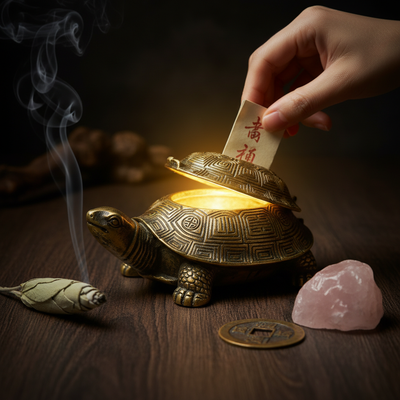
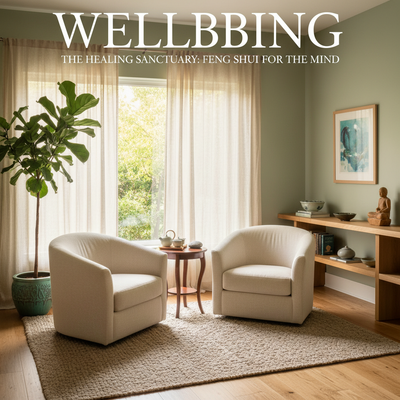
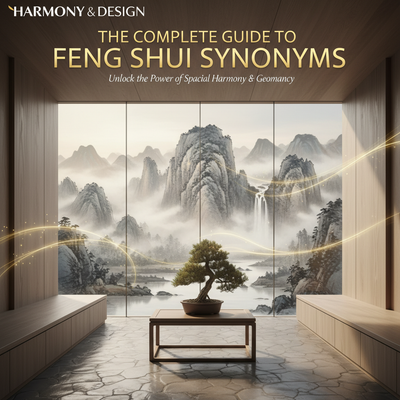

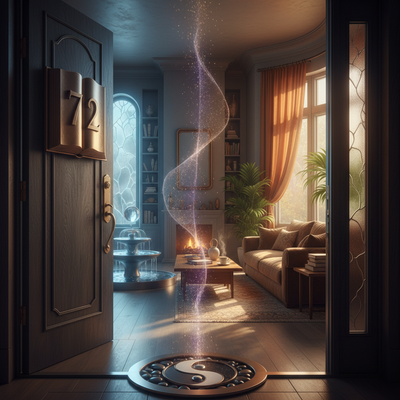
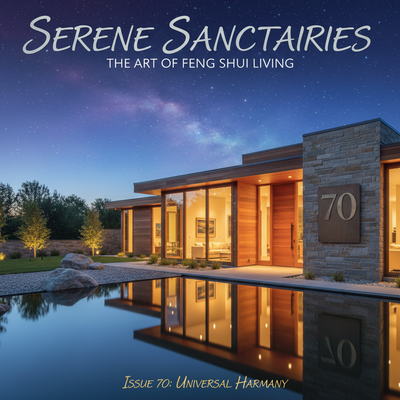

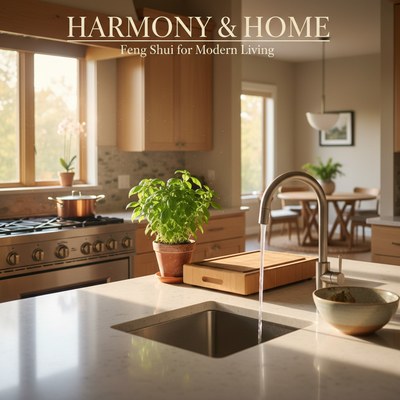
0 comments